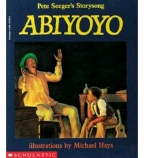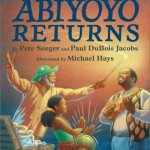 “It is time for parents to teach young people early on that in diversity there is beauty and there is strength.” – Maya Angelou.
“It is time for parents to teach young people early on that in diversity there is beauty and there is strength.” – Maya Angelou.
Next Monday we celebrate the birthday of the Reverend Dr. Martin Luther King, Jr. What better way to honor his dream of a nation where our children “will not be judged by the color of their skin but by the content of their character” than with a wonderful children’s book celebrating our differences and our similarities.
Let’s Talk About Race is written by Julius Lester and illustrated by Karen Barbour. “I am a story,” Lester writes. “So are you. So is everyone.” Our race is just one part of our stories. “To know my story, you have to put together everything I am.”
How does your story begin? When were you born, and who is in your family? What is your favorite food, your religion, your favorite color, your nationality? All of these things are a part of our stories. But, “some stories are true. Some are not. Those who say ‘MY RACE IS BETTER THAN YOUR RACE’ are telling a story that is not true.”
Lester goes on to tell a story that is true: if you press your fingers gently below your eyes, you can feel the bone beneath your skin. And if you press gently on a friend’s face, no matter what their skin color, you will feel the bone there, too. “Beneath our skin I look like you and you look like me…” Instead of focusing on the stories we can make up about each other based on eye color, skin color, and hair texture, we can find out the true stories, the rich and complex stories, of each other.
After you read Let’s Talk About Race with your students, talk about race! And talk about all the other wonderful parts of our stories, from favorite foods to hair color to pet peeves. You can make a questionnaire based on all the elements Lester talks about for students to answer. Next, challenge students to find someone else who had the something the same on his or her list. You can integrate this into a math lesson by graphing some of the answers, like eye color, or get out the art supplies and let students make cool representations of themselves. If your students can “identify the main purpose of a text, including what the author wants to answer, explain, or describe”, you’ll hit the Common Core State Standard of Craft and Structure using a book with a truly worthwhile main purpose.




